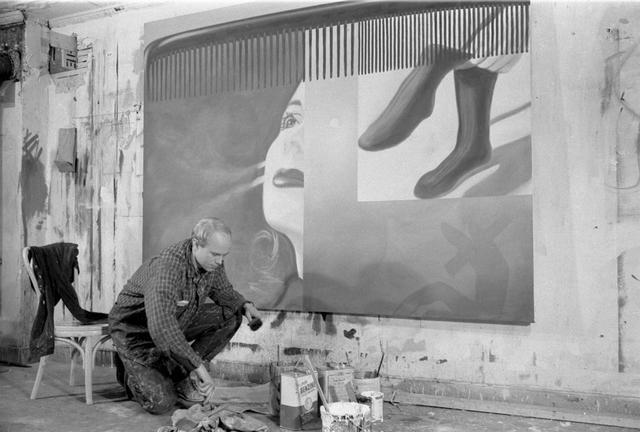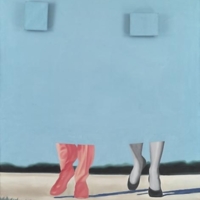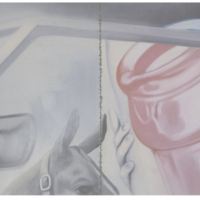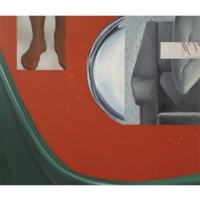James Rosenquist
Born in North Dakota in 1933, Rosenquist grew up on the Great Plains in various cities where his father sought work as a mechanic. Rosenquist studied art for two years at the University of Minnesota while supporting himself as a commercial sign-painter; at his professor’s urging he applied for a scholarship to the Art Students League in New York. There, while he studied, he joined the sign-painters’ union and rose to lead painter at the Artkraft-Straus corporation, known for its enormous, hand-painted billboards above Times Square. By 1960 he was able to quit sign-painting to pursue art full-time. His work shifted from abstraction to large paintings that that adapted the technique and “visual inflation” of billboards but using shifts in scale and “fragments . . . that are caustic to one another.” He later recalled, “I wanted my paintings to spill out the front of the canvas in a very impersonal way” (Hopps 2003).
Unlike the found or junk imagery with which Claes Oldenburg was working in those years, Rosenquist took his pictures from advertisements in slick, outdated magazines, combining polished images in a smooth but hand-painted technique: women’s faces are perfected with cosmetics, their legs shaved, men are groomed and wear natty clothing. In the Untitled painting shown in Six Painters and the Object at the University of Michigan, the lower portion of male and female legs stride into the future in an uncertain take on the ideals of beauty and coupledom promoted in student publications at the time.
Rosenquist’s career took off in 1962 with his first solo exhibition at the Green Gallery. His monumental canvas F-111 (1964) harnessed consumer-based imagery in a protest against the military-industrial complex escalating the war in Vietnam. In the 1970s he established a studio in Florida where his large-scale paintings began to incorporate themes from nature and science. In 1978 he was appointed by President Jimmy Carter to a six-year term on the National Council on the Arts. Rosenquist remained active as an artist nearly until his death in 2017.
-RZ





